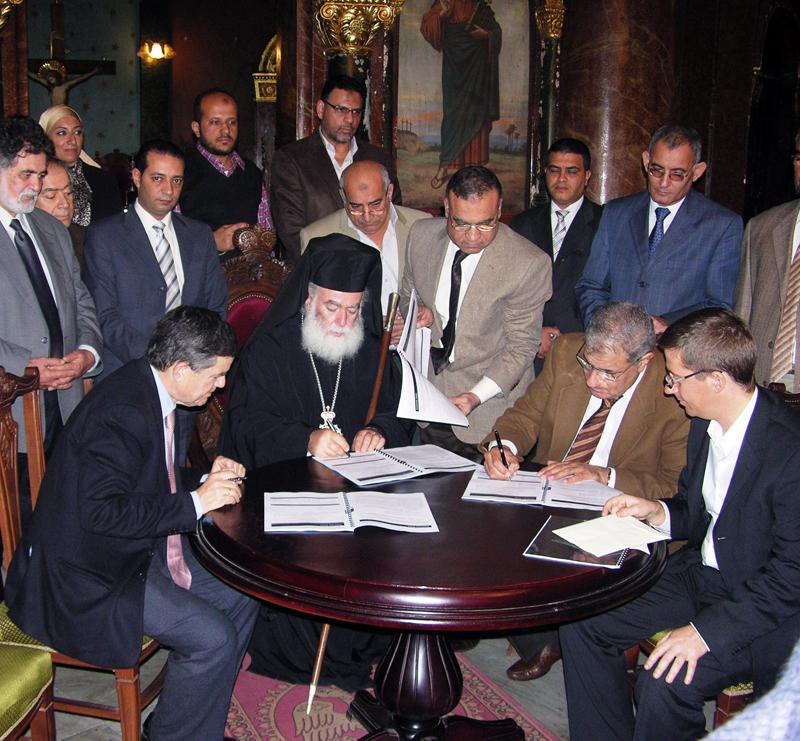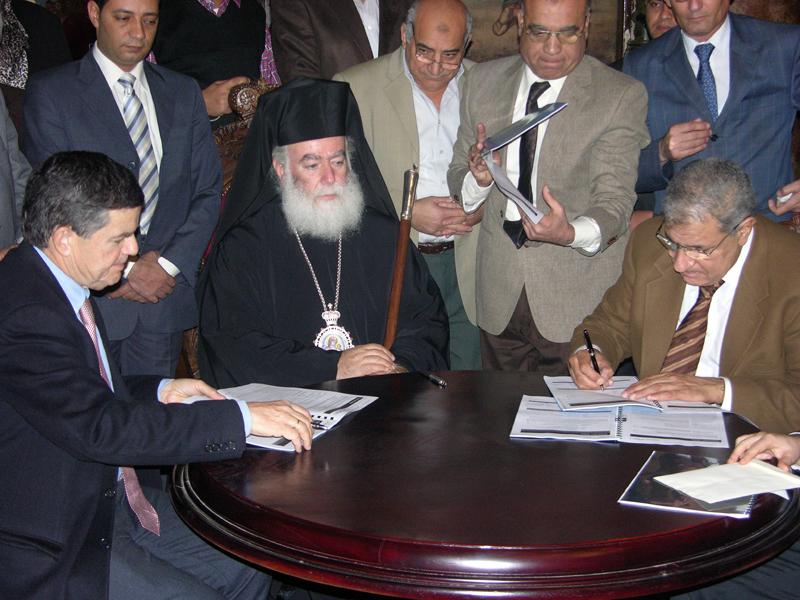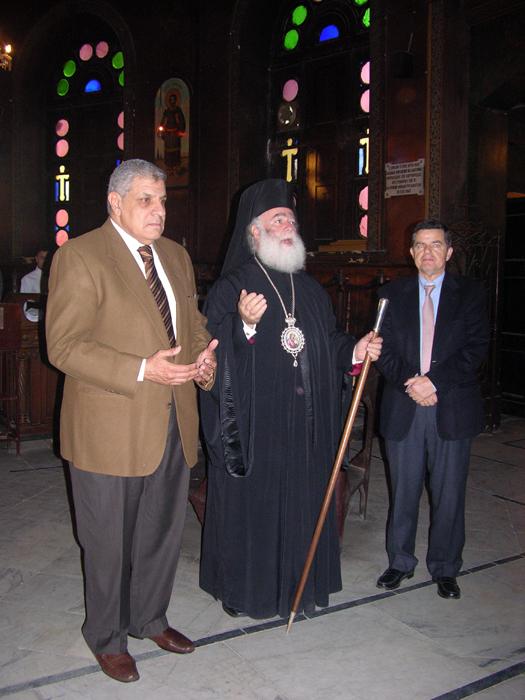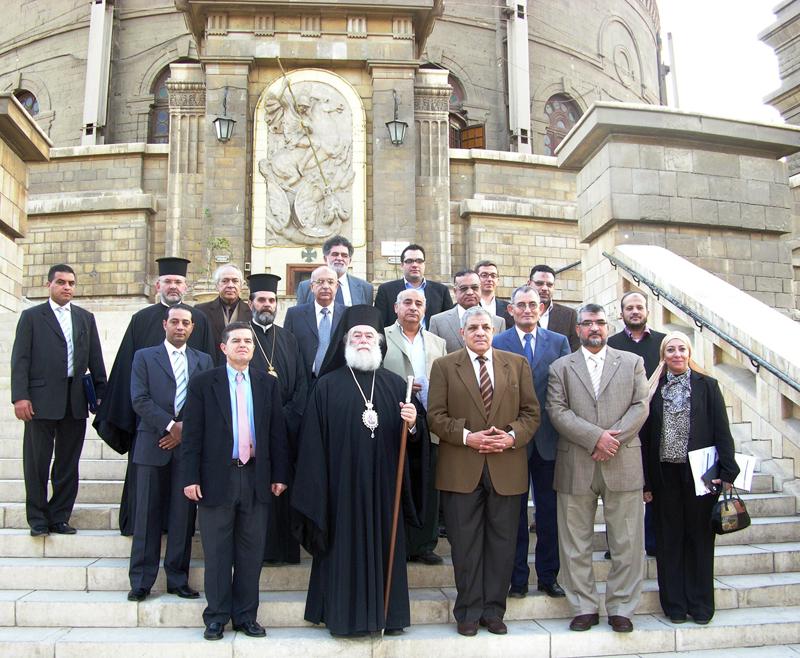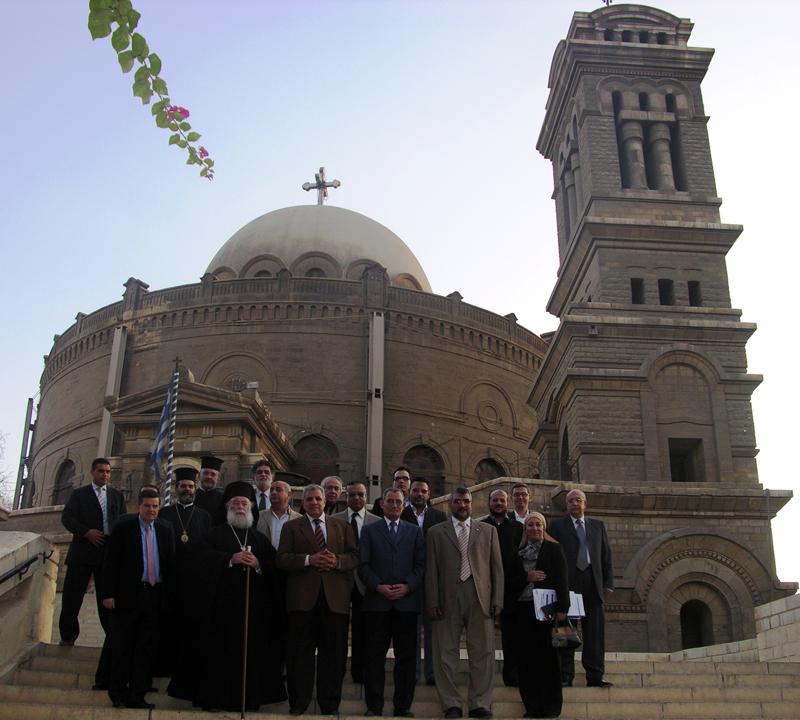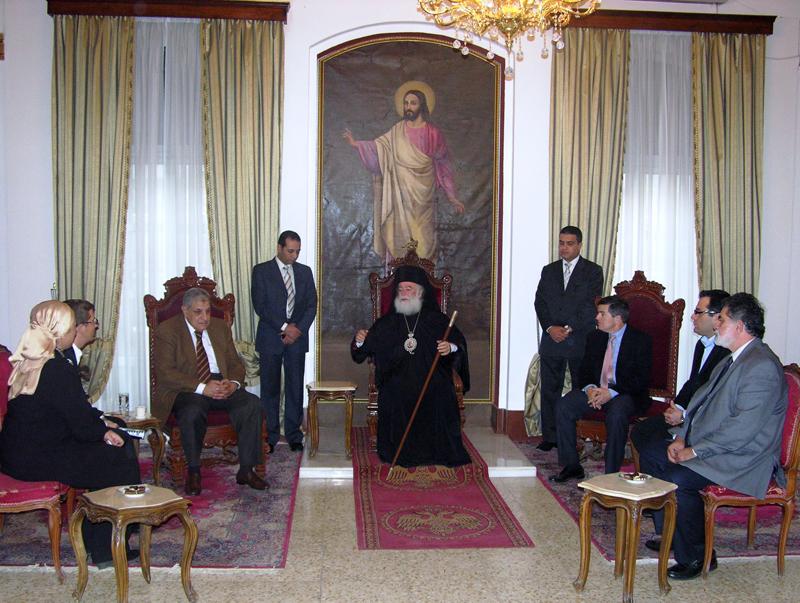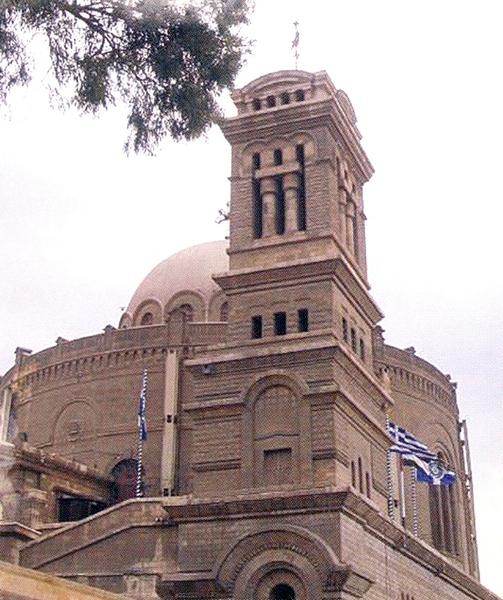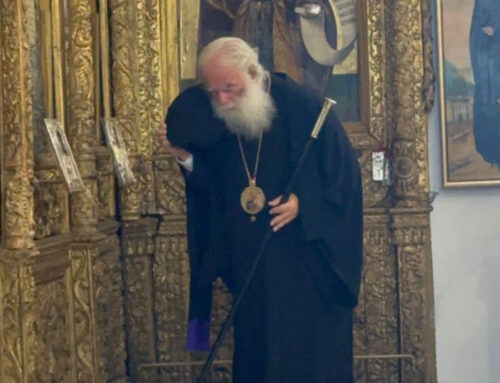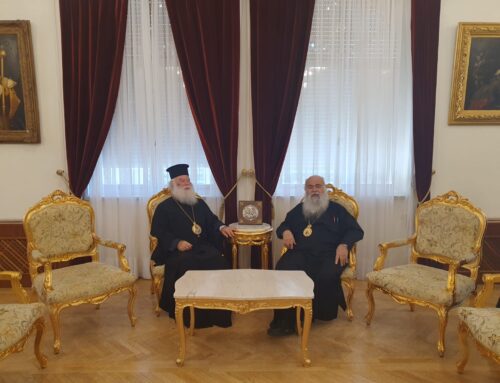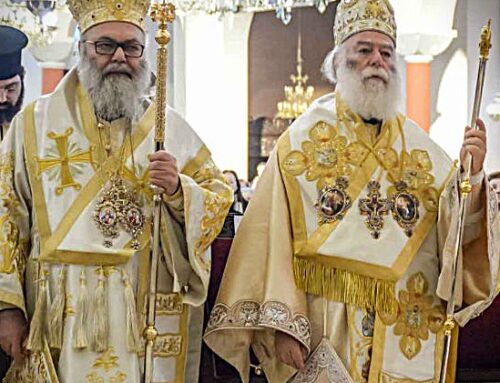The 10th December 2011 was an historic day for the ancient Patriarchate of Alexandria and All Africa as, in the presence of His Beatitude Pope and Patriarch Theodoros II, the contract for the renovation work on the Holy Monastery of St George in Old Cairo, known as the “Rotunda” of the Middle East, was officially signed.
Present at the signing ceremony were the two great agents who will be contributing to the total renovation: the ship owner Mr. Athanasios Martinos, who has undertaken the total cost of the renovation n work and Mr. Ibrahim Mahlab, President and Management Consultant of “Arab Contractors”, the largest construction company in Egypt. With the blessings of the Venerable Primate of the Orthodox Church in Africa, the two parties have now joined forces so that within a period of three years the monastic compound of St George will be returned to its former glory as one of the most important religious in the whole of Africa, a spiritual “jewel for Christianity, Greece and Egypt”, as the Patriarch said, as “St George is honoured and respected by Christians and Muslims alike”.
During the signing ceremony of the contract in the Holy Church, His Beatitude, visibly moved, did not hide his satisfaction that “after 100 years this monument of Christianity is once again being renovated”. He warmly thanked Mr. Martinos for his wholehearted contribution, which is being added to his many benefactions to the Church and to his homeland. “This work, however, will preserve your name and that of your family in gold letters to eternity”, he added. “I praise the All Merciful God because the renovation of the Monastery of St George, the place where the Holy Family sought refuge from the pursuing of Herod and the place where the Great Martyr St George was imprisoned, was a dream and a vision for me, from the very beginning of my Patriarchal tenure and it is being realized today through the beginning of the relative work”. He also thanked the sponsor Company “Arab Contractors”, a company with enormous experience, consistency and effectiveness in the field of construction.
HISTORIC DATA
The Holy Monastery of St George is located in the are of Old Cairo. It is the old area known as Babylonos of Egypt, which took its name after the settlement of the Babylonian captives which the Pharaoh Ramses I (1390 BC) brought to Egypt from his campaign in Asia. It is close to the pyramids, between ancient Memphis and Heliopolis.
The Babylonians built a fortress there. The fortress, known as Qasr el Rum or Qasr el Samma (Palace of the Torches, either because of the worship of fire, or because of the enlightened points of understanding) has been renovated three times by the Roman Emperors Octavius, Traianus, and Arcadius, due to the geographical importance of the place.
Following the decisive prevalence of Christianity in Egypt, when in the year 383 A.D. Theodosius the Great issued a decreed doing away with pagan temples by soldiers, in honour of the soldier St George, and Babylonia became a Diocese. Following the Arab occupation of the Land of the Nile (7th century A.D.) it is renamed Fustat (military camp, a variation on the byzantine word Fossato, from the Latin fossatum) and following the founding of Cairo it is called Misr al Atiqa or Misr al Gatimad.
The Monastery of St George through the ages operated as a convent, hospital, poorhouse, old age home, school and cemetery, was prone to consecutive destructions and renovations, the last in 1904, when it suffered serious damage from a fire and was renovated by Patriach Fotios (1900-1925).
The Church of St George is round, eight-columned, similar to the Basilica of St Vitale in Ravenna, surrounded by an ancient wall at a distance of half a square kilometer, the largest part of which has been destroyed. In 1998 Greece undertook the construction of a new wall to preserve its ancient parts, with two entrances, the central one towards the Hegumen’s residence and the other entrance towards the Greek cemetery, which witnesses to and preserves glorious memories of the Hellenes of Egypt.




